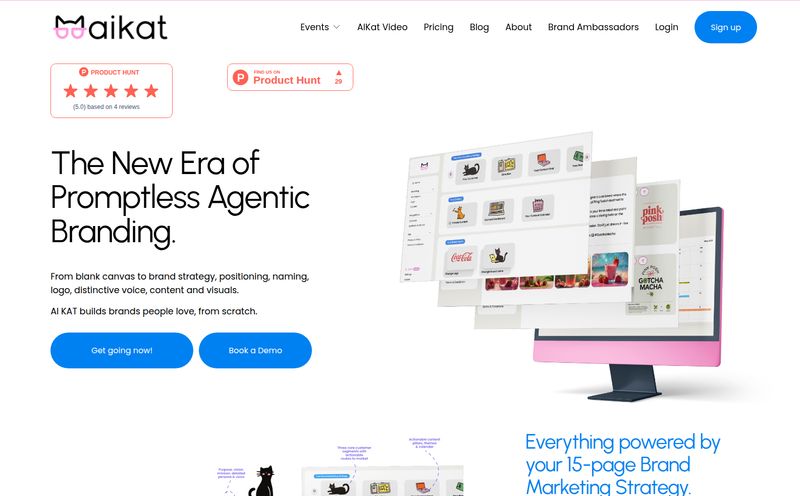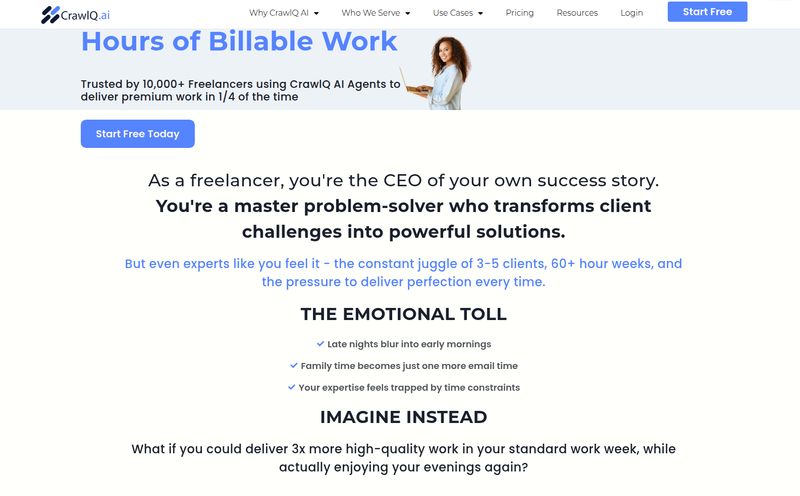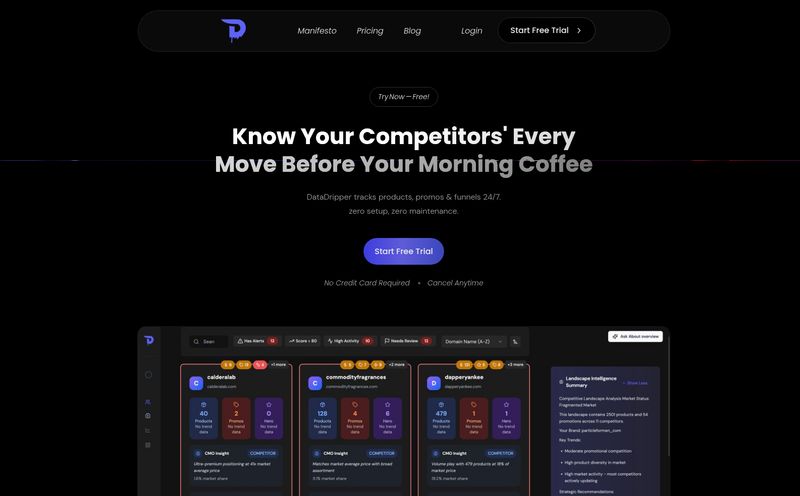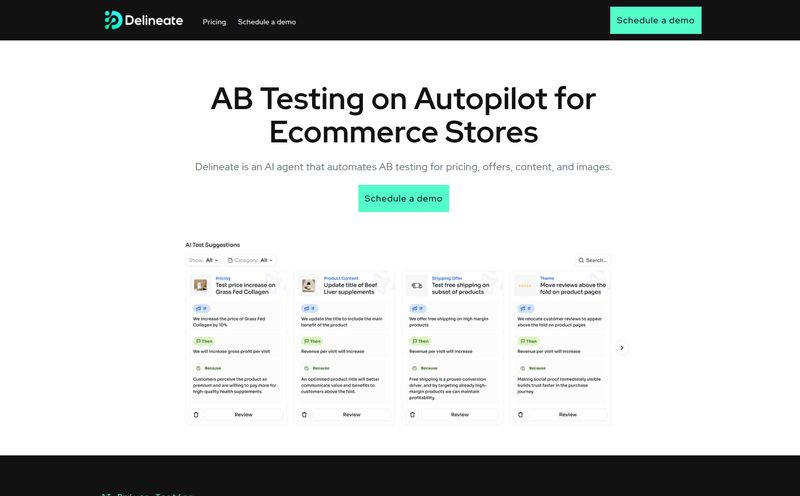I’ve been in the SEO and traffic game for a long, long time. I remember the “good old days” of A/B testing. Days spent begging a developer to change a button color, waiting two weeks for it to get pushed live, and then realizing the tracking code was installed wrong. The whole process was clunky, expensive, and honestly, a bit of a nightmare. We’d fight for a 2% lift in sign-ups and call it a massive win.
But the web has changed. Getting traffic is only half the battle. The real magic, the stuff that separates the seven-figure brands from the ones that fizzle out, is what you do with that traffic. It's about personalization. It's about making every visitor feel like your website was built just for them. And for years, that level of customization was reserved for the Amazons and Netflixes of the world.
Then tools like CustomFit.ai started showing up, and I have to admit, my inner marketing nerd got a little giddy. A no-code, AI-powered tool that promises to bring hyper-personalization to the masses? Sign me up. But is it just another piece of shiny martech, or is it the real deal? Let’s get into it.
So, What Exactly is CustomFit.ai?
Let's break it down without the corporate jargon. CustomFit.ai is a software tool that lets you change parts of your website for different visitors. Automatically. Without writing a single line of code. Think of it like a chameleon for your website. Someone comes from a Facebook ad about running shoes? They see a homepage banner all about your latest running gear. Another person arrives from a Google search for “B2B marketing solutions”? Bam, they get a headline that speaks directly to their business needs.
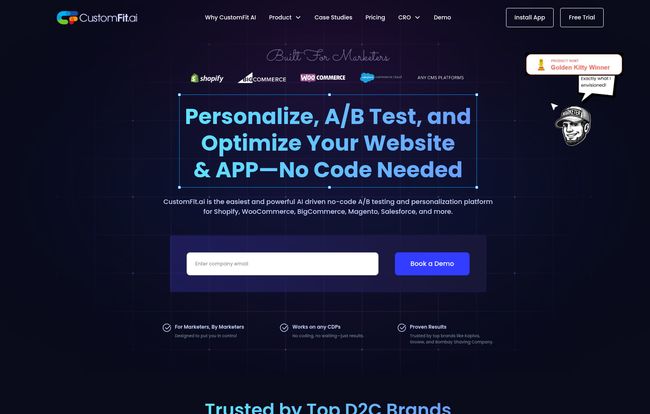
Visit CustomFit.ai
It’s built on this idea of dynamic content and A/B testing, but with a powerful AI brain layered on top. So you’re not just guessing what might work better. You’re giving the AI the ingredients—a few different headlines, a couple of images, maybe a different call-to-action—and it figures out the winning recipe for different types of visitors, all in real-time. This is what they mean by a Conversion Rate Optimization (CRO) stack, and it's a pretty big deal for both D2C brands trying to sell more products and B2B companies looking for higher quality leads.
The Features That Actually Matter to Marketers
A feature list can be boring, I know. But some of these are worth talking about because they solve very real, very annoying problems that marketers like us face every day.
The Magic of the No-Code Visual Editor
This is probably the biggest selling point for me. The independence it offers is just chef's kiss. In the past, if I wanted to test a new headline, I’d have to write up a ticket, explain the goal, send it to a project manager, who would then assign it to a developer. With a visual editor like CustomFit.ai’s, you literally just log in, point at the text you want to change on your live site, type in a new version, and hit save. You can create different “variants” for banners, product descriptions, whatever, in minutes. It puts the power right back into the hands of the marketer, where it belongs.
Letting AI Take the Wheel on Optimization
Standard A/B testing is great, but it’s a bit… dumb. It just splits traffic 50/50 and tells you which version won at the end. CustomFit.ai's AI goes a step further. It uses a multi-armed bandit approach (a fancy term from probability theory) to not just test, but to actively optimize. As it gathers data and sees that ‘Variant B’ is performing better for visitors from Canada, it will start showing ‘Variant B’ to more Canadians. It’s actively working to get you more conversions during the test, not just after. The case studies on their site, boasting things like an 11% conversion rate improvement or a 35% jump in subscriptions, start to make a lot of sense when you understand this.
Flicker-Free A/B Testing? Yes, Please.
Okay, this one is for my fellow SEO and UX nerds. You know what I’m talking about. That awful “flicker” effect where a user loads a page, sees the original content for a split second, and then—ZAP—it flashes and changes to the test variant. It’s jarring for the user, and I’m convinced it skews test results. Not to mention, Google’s Core Web Vitals are all about user experience and page stability (CLS). A tool that causes flickering is a red flag. CustomFit.ai’s claim of a flicker-free experience is a huge green flag. It tells me they’ve built their tech the right way, prioritizing user experience and data integrity.
My Honest Take on the Platform
Alright, enough of the feature rundown. What’s it actually like? I've seen dozens of these tools over the years, and you start to see patterns. Here’s my take on the good and the not-so-good.
The Good Stuff
The ease of use is genuinely impressive. For something so powerful, it doesn't feel intimidating. The workflow of selecting an element, creating a variant, and setting a goal is intuitive. The promise of seamless integration with any CMS seems to hold up too; you’re essentially just adding a snippet of code to your site header, much like Google Analytics. After that, it’s all managed from their dashboard. For an agency person managing multiple client sites, or an in-house marketer wearing ten different hats, this simplicity is worth its weight in gold.
Where It Could Be Better
No tool is perfect, right? My main hesitation comes down to the pricing structure. It's package-based, which is fine, but it might put it out of reach for a solopreneur or a very small startup just getting its feet wet. The jump from the free trial to $99/month could be a bit steep for some. And my personal pet peeve: hiding the enterprise pricing behind a “Schedule a Call” button. I get why companies do it—it’s a sales tactic to get you on the phone—but sometimes you just want to see teh number and know if you’re even in the right ballpark. It’s a minor frustration, but a frustration nonetheless.
Let's Talk Money: CustomFit.ai Pricing Breakdown
So, what does this actually cost? The pricing is tiered based on usage, primarily the number of personalized visitors you can have per month. Here’s a quick look:
- Free Trial: This is your test drive. You get 20 personalized visitors, 100 personalized links, and can run 2 campaigns. It’s not enough to run your business on, but it’s more than enough to see how it works and if you like the interface.
- Basic Plan ($99/month): This is the entry-level paid plan. It bumps you up to 200 personalized visitors, 2,000 links, and 10 campaigns. This is a solid starting point for a small business or a site with moderate traffic that wants to get serious about CRO.
- Standard Plan ($199/month): For growing businesses. You get 500 personalized visitors, 5,000 links, and 25 campaigns. If you’re starting to see real traction and want to double down on personalization, this is likely the sweet spot.
- Custom Plan (Contact for Price): This is the all-you-can-eat buffet. Unlimited everything, plus the heavy-hitter integrations like Salesforce, HubSpot, and Clearbit. You also get a dedicated Key Account Manager. This is for established businesses and enterprises where a 5% conversion lift could mean millions in revenue.
Who Should Actually Use CustomFit.ai?
This isn't a tool for everyone. If you're just starting a blog and get 100 visitors a month, this is overkill. But if you fall into one of these camps, you should pay attention:
- The Scrappy D2C Brand Owner: You're running paid ads and every click costs money. You need to maximize the conversion rate of that expensive traffic. CustomFit.ai could help you turn more window shoppers into buyers by personalizing the experience from ad to landing page to checkout.
- The B2B Marketer: You're trying to attract clients from different industries. Imagine personalizing your homepage headline and case studies based on whether the visitor works in finance, healthcare, or manufacturing. That’s the kind of account-based marketing (ABM) that closes big deals.
- The Overworked Agency Pro: You're juggling multiple clients and need to show tangible results. A tool like this lets you run CRO experiments and deliver impressive reports without creating a bottleneck with your client's dev team. It makes you look like a hero.
Final Thoughts: Is CustomFit.ai Worth It?
So, here’s the bottom line. CustomFit.ai is a seriously powerful, well-designed tool that solves a very modern marketing problem. It democratizes website personalization, taking it from the realm of mega-corporations and putting it into the hands of marketers and business owners. The no-code editor and AI-driven optimization are a killer combination.
Is it worth the investment? If you have traffic but are struggling with conversions, then absolutely. You have to think of the cost not as an expense, but as an investment. If a $99/month plan helps you generate an extra $500 in sales, it's a no-brainer. The key is having enough traffic to get statistically significant results.
For the right business—one that's ready to move beyond just acquiring traffic and start optimizing the experience—CustomFit.ai feels less like a tool and more like a secret weapon.
Frequently Asked Questions (FAQ)
- Is CustomFit.ai difficult to set up?
- Nope. It’s designed to be no-code. You basically just add a small piece of code (a script) to your website’s header, and then you manage everything from the CustomFit.ai dashboard. No developers needed for day-to-day use.
- Will the A/B testing slow down my website?
- They specifically advertise a “flicker-free” experience, which suggests they've engineered it to be lightweight and fast. A slow testing tool is self-defeating, so this is a major focus for platforms like this. Performance impact should be minimal.
- Can I personalize content based on where a visitor comes from?
- Yes, this is a core part of its functionality. You can personalize based on things like UTM parameters (from your ad campaigns), geo-location, user behavior on the site, and more.
- Is there a completely free version of CustomFit.ai?
- There is a Free Trial that lets you test out the features on a small scale. There isn't a permanently free plan for ongoing use, though. You'll need to upgrade to a paid plan after the trial.
- What kind of support can I expect?
- Based on their pricing, you can expect standard customer support on the paid plans. The Custom enterprise plan, however, includes a dedicated Key Account Manager for more hands-on support and strategy.
- Does CustomFit.ai integrate with CRM tools like HubSpot or Salesforce?
- Yes, but those advanced integrations are part of the top-tier Custom plan. If connecting to your CRM is a must-have, you'll need to contact their sales team for a custom quote.
Conclusion
We've come a long way from those clunky, developer-dependent A/B tests of the past. The internet today is all about the user experience, and personalization is no longer a luxury—it's an expectation. Tools like CustomFit.ai are at the forefront of this shift, making it easier than ever to create smarter, more effective websites that speak to each visitor individually. It’s an exciting time to be a marketer, and with the right tools, the potential to grow is pretty much limitless.
